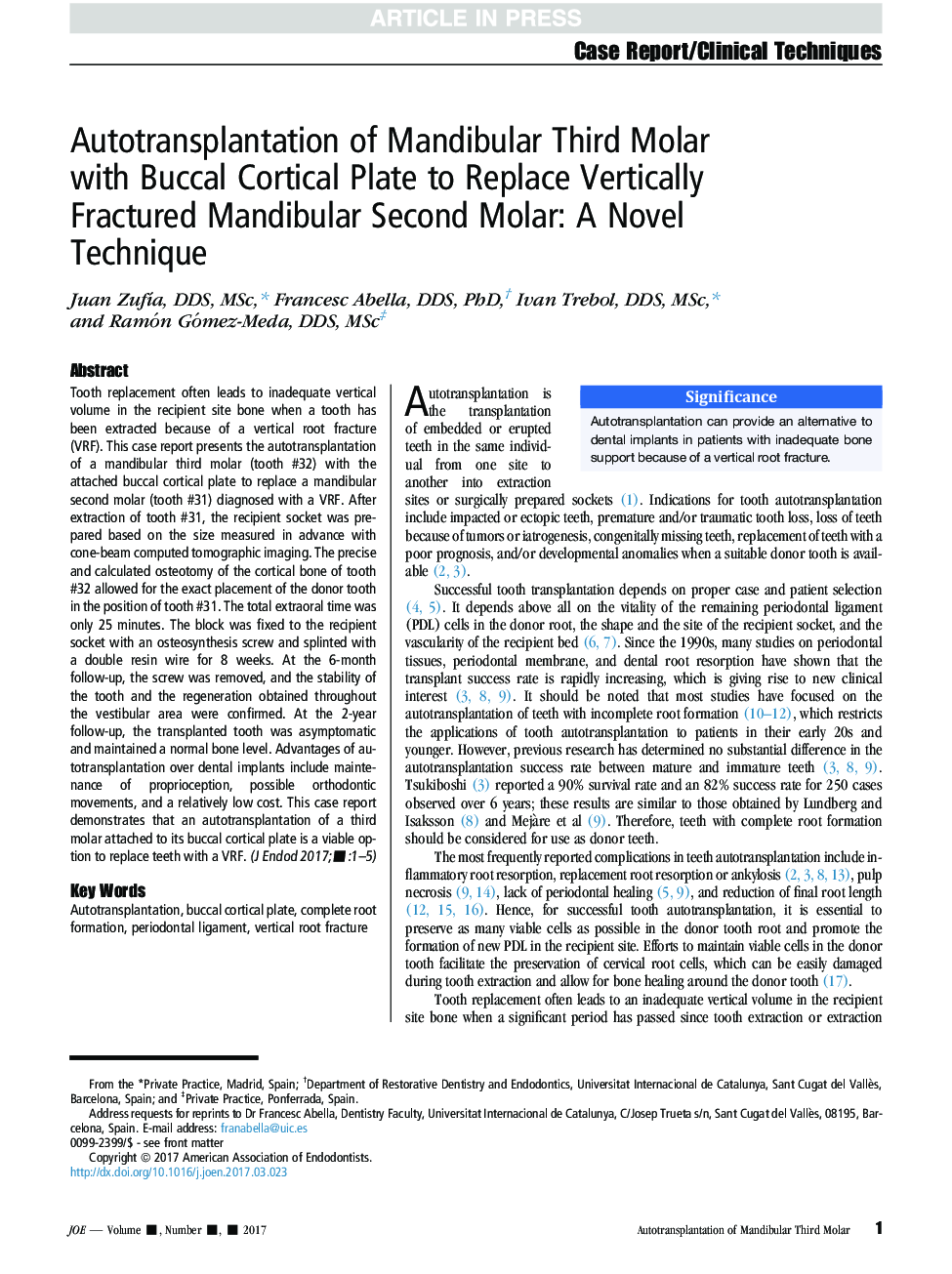| Article ID | Journal | Published Year | Pages | File Type |
|---|---|---|---|---|
| 5640771 | Journal of Endodontics | 2017 | 5 Pages |
Abstract
Tooth replacement often leads to inadequate vertical volume in the recipient site bone when a tooth has been extracted because of a vertical root fracture (VRF). This case report presents the autotransplantation of a mandibular third molar (tooth #32) with the attached buccal cortical plate to replace a mandibular second molar (tooth #31) diagnosed with a VRF. After extraction of tooth #31, the recipient socket was prepared based on the size measured in advance with cone-beam computed tomographic imaging. The precise and calculated osteotomy of the cortical bone of tooth #32 allowed for the exact placement of the donor tooth in the position of tooth #31. The total extraoral time was only 25 minutes. The block was fixed to the recipient socket with an osteosynthesis screw and splinted with a double resin wire for 8 weeks. At the 6-month follow-up, the screw was removed, and the stability of the tooth and the regeneration obtained throughout the vestibular area were confirmed. At the 2-year follow-up, the transplanted tooth was asymptomatic and maintained a normal bone level. Advantages of autotransplantation over dental implants include maintenance of proprioception, possible orthodontic movements, and a relatively low cost. This case report demonstrates that an autotransplantation of a third molar attached to its buccal cortical plate is a viable option to replace teeth with a VRF.
Related Topics
Health Sciences
Medicine and Dentistry
Dentistry, Oral Surgery and Medicine
Authors
Juan DDS, MSc, Francesc DDS, PhD, Ivan DDS, MSc, Ramón DDS, MSc,
